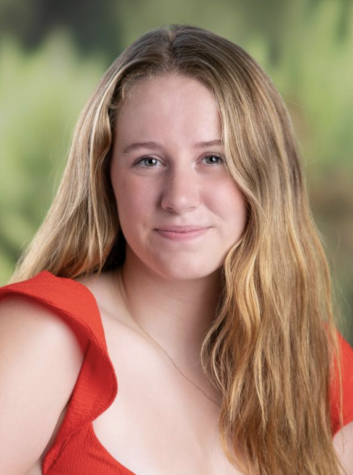Teachers Are Excited to Welcome All Students Back and Ready to Make Adjustments
Many teachers are excited to welcome all of the student body onto campus. Previously, students attended school virtually or in person with their Blue and Gold cohorts. Staff illustration: Sophie Fang.
April 19, 2021
After spring break, Menlo will return to in-person classes with 100% of the student body allowed on campus. The school observed a one-week quarantine period after the break to ensure the safety of the community, but after that, all students were invited back on campus.
With more people on campus, the school’s pre-existing precautions will remain, along with a few more restrictions. There will be COVID-19 testing required twice each week — increased from once per week — in addition to maximum capacities being set in each classroom. Dean of Students Tony Lapolla feels that these restrictions will keep the community safe, should they be followed correctly. “[Returning to campus means that it is] time for us to continue to maintain [our current] vigilance,” he said.
As long as everyone follows the precautions, teachers are optimistic about the benefits of having everyone back together on campus.
World Languages Department Chair and Spanish teacher Janet Tennyson is looking forward to the increased ease of getting in contact with students. During distance learning, connecting with her students usually required emails and setting up Zoom meetings, ultimately leading to more screen time for her and her students. On campus, she can simply go out on the quad to find them. “[I’ll get] much more contact with students, which is what I miss and want,” Tennyson said.
Similar to Tennyson, chemistry and physics teacher Mary McKenna is also looking forward to increased in-person contact with her students. “Student bonding with each other and their teachers […] just hasn’t been as prominent this year,” McKenna said.
Despite the positive impact that teachers expect increased human connection will have on the community, there will still be some challenges for teachers with this in-person model.
Some teachers, like history teacher Abby Tieck, will continue to teach from home because of a nerve condition aggravated by stress and anxiety. Staying home helps her minimize those things to manage her condition. Tieck is concerned that if she is not in person and is one of the only people on Zoom, she will not be there for her students. “I want to be there as fully as I can be,” she said.
Even though there will be more people on campus after spring break, the number of students in each classroom be limited. Menlo’s policy now is that most rooms have a capacity of twelve students, so any classes larger than that will have some students outside, connecting to the class via Zoom.
In following this precaution, teachers are saddled with the responsibility of deciding who will be inside and who will be outside. McKenna knows that the classroom will most likely be an easier place to learn than the quad, so to keep it fair, she will be shifting who is inside and who is outside on a day-to-day basis. “Everyone at least will go [outside] once [by the end of the year],” she said.
Tennyson will also be rotating who is learning where. She plans on posting the rotation plan on Canvas and the bulletin boards outside of her classroom so that her students know where they will be each class.
Because being in-person is not required for students, teachers will most likely be faced with the challenge of planning for in-person students in their classrooms, in-person students outside of their classrooms and a few students on Zoom.
“The way that we have to plan if all [or] almost all of the students are in-person versus students at home and in-person is much different,” Tieck said. She emphasized that it will be important for students to let their teachers know if they aren’t coming to campus one day.
Another concern that goes along with having more people on campus is a higher risk of infection, but all of the teachers interviewed are vaccinated and are not too worried because of all the precautions being taken. “I think we are taking a calculated risk that has more benefits than drawbacks,” Tieck said.
Despite the challenges and concerns, the positives outweigh the negatives for many Menlo teachers, and they are excited to have all of their students back on campus. “[T]he majority of why I decided to be in this profession is to work with kids to have them grow academically and socially, so I’m very excited,” McKenna said.



